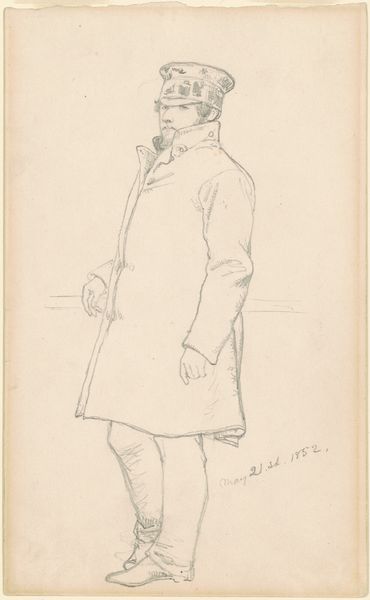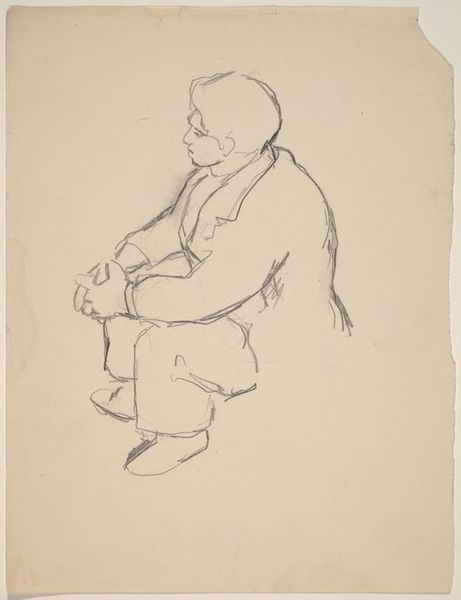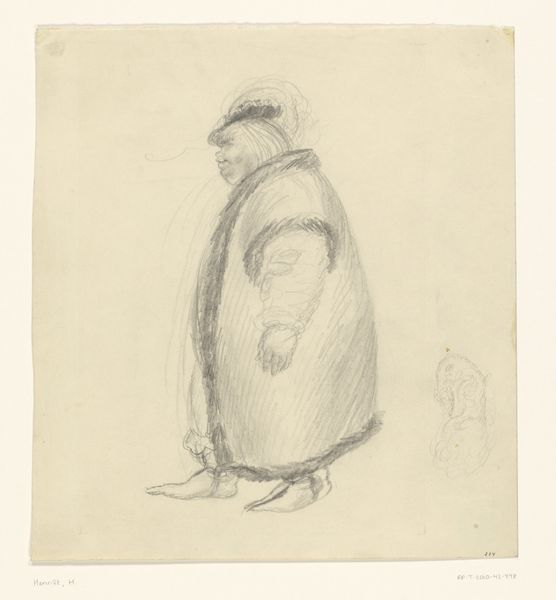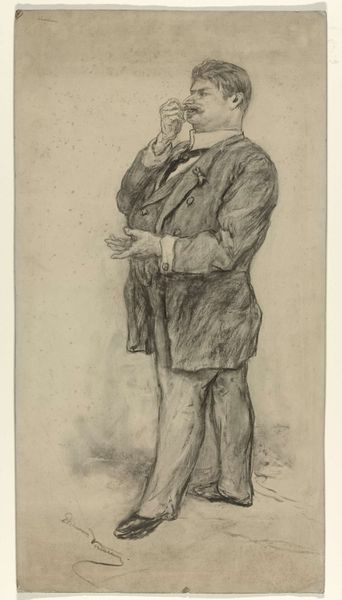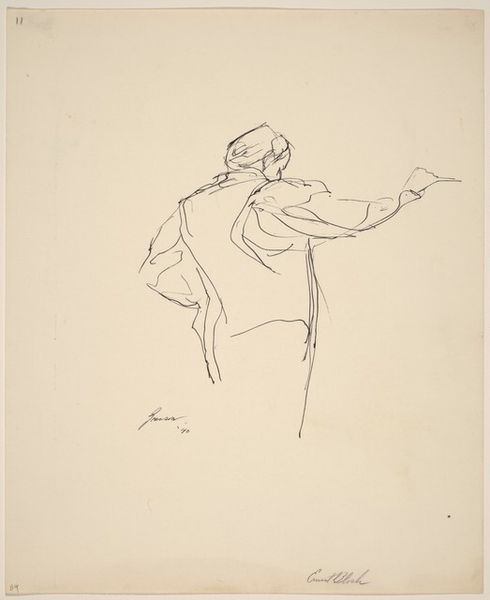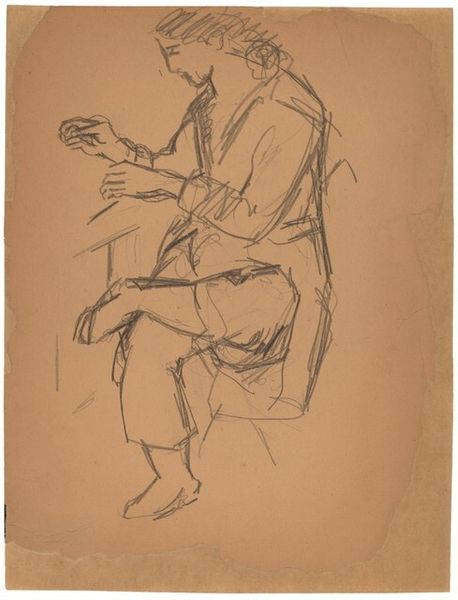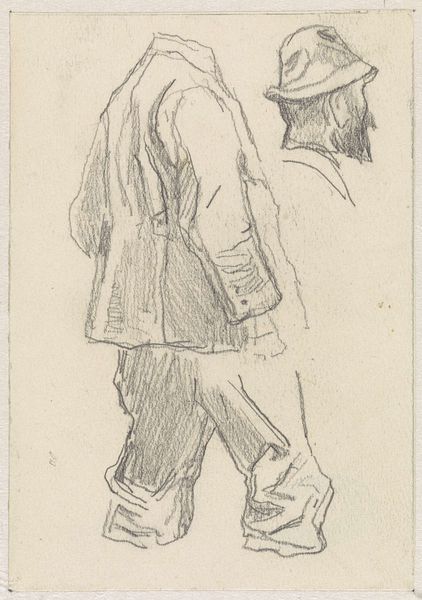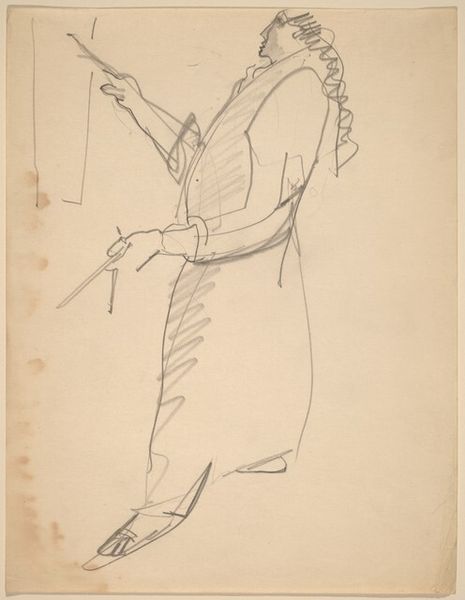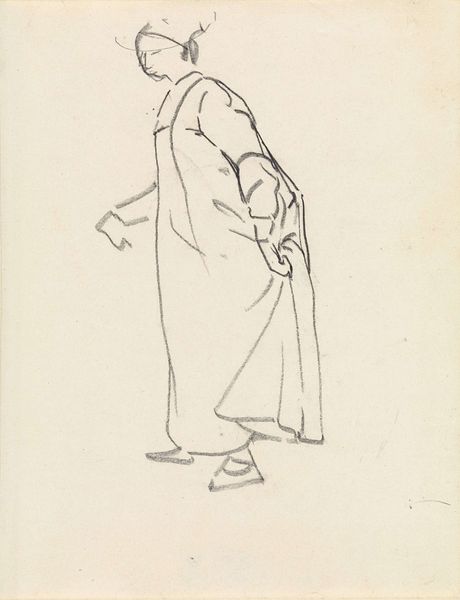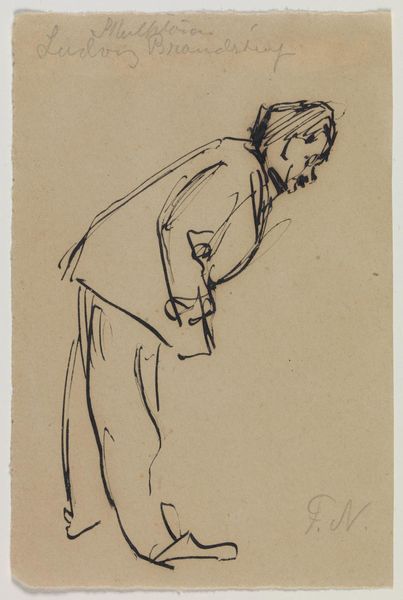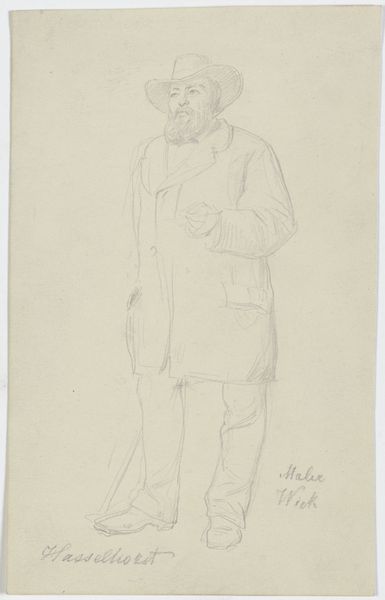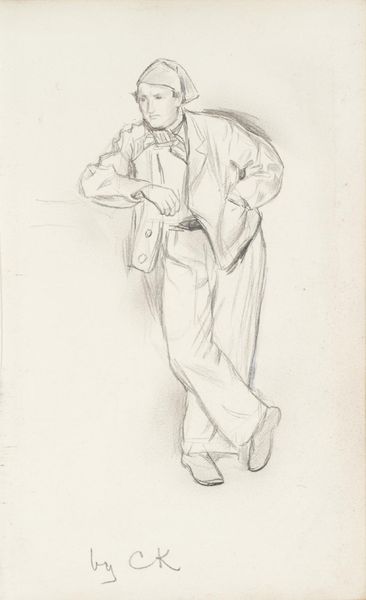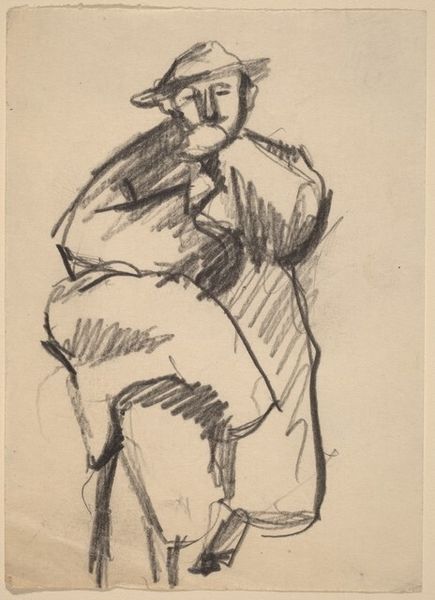
drawing, pencil
#
portrait
#
drawing
#
figuration
#
pencil
#
academic-art
#
realism
Dimensions: height 330 mm, width 211 mm
Copyright: Rijks Museum: Open Domain
Curator: It strikes me immediately how unassuming this drawing is. Such subtle variations in pressure create such form. Editor: You’ve keyed into the wonderful nuances of this pencil drawing, “Portret van Theo van Hoytema,” crafted between 1900 and 1917 by Jan Veth. The piece resides here at the Rijksmuseum, a seemingly casual figuration, if I can start there, offering a moment of observation into this man, caught while reading. Curator: Yes, I can almost feel the texture of the paper and imagine the artist's hand moving across the surface. The simplicity of the materials is so effective, even down to his clothes. They have such weight from just a few well-placed strokes. Editor: I think this depiction captures a societal snapshot of its era. Consider the pose; notice the subject holding a cane, clad in formal dress reading from a book – these are all deliberate elements, crafted perhaps to reflect on literacy among the Dutch bourgeoise. Curator: Exactly. But it goes deeper, perhaps into a conversation about artistic integrity during that time. Was the artist trying to elevate drawing to the same level as painting? There is that tension between what constitutes high art. Editor: Well, portraiture itself served varied roles back then. It wasn't just about representation; it often solidified social status. Curator: Certainly, the choice to present the man with an accessory as overt as the cane underscores such societal positions. It all leads us to consider Veth's role—did he create this work for himself, for Hoytema, or to speak on class identity itself? Editor: I find myself returning to that original point you made—that immediate visual impact and honesty of process through pencil. I’ll reflect on that materiality and what it means for social context here. Curator: And I leave with more food for thought about how that same social context informs Veth's handling of a readily accessible material and the drawing's position within that art hierarchy.
Comments
No comments
Be the first to comment and join the conversation on the ultimate creative platform.
